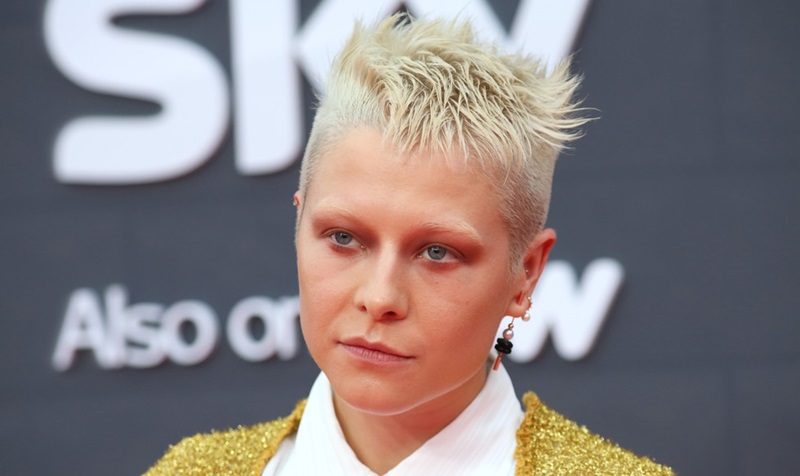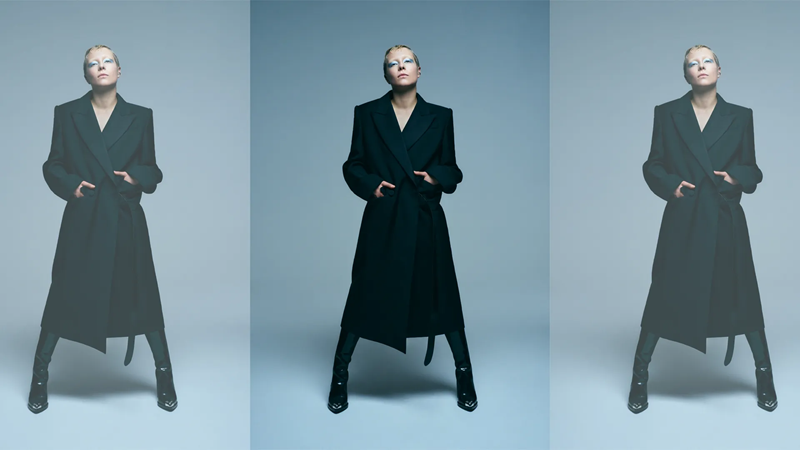Emma D’Arcy, a phenomenal British actress born in 1992, is a force to be reckoned with in the realm of performing arts. This talented artist, born and raised in England, has ignited the stage and screen with her captivating performances. Possessing a natural flair for acting, D’Arcy completed her education at the prestigious Royal Academy of Dramatic Art in London. Her illustrious career started in theatre, where she exhibited an exceptional talent for embodying a wide range of characters.
Her transition from stage to screen has been seamless, as D’Arcy has proven her versatility by stepping into various roles in both mediums. With a keen eye for detail and a deep understanding of the complexities of human character, she has managed to deliver performances that are both authentic and moving. She is best-known for her role as Astrid in the Amazon Prime exclusive series, «Truth Seekers», where she demonstrated a unique ability to bring to life a character that is both captivating and complex.
D’Arcy’s gifted acting skills have not gone unnoticed; she has been lauded by critics and fans alike for her performances. Her dedication to her craft and her ability to immerse herself in her characters has positioned her as a rising star in the entertainment industry. Whether she is performing on stage or on screen, her compelling performances continue to capture the hearts and minds of her audience.
In addition to her acting career, D’Arcy is also a voice-over artist, lending her voice to various animated characters and audio productions. This multi-faceted talent further amplifies her versatility as an artist.
Off-screen, D’Arcy is a private individual who prefers to keep her personal life away from the public eye. However, her commitment to her craft and her dedication to delivering exceptional performances has made her a beloved figure in the entertainment industry. Her continued growth as an actor, coupled with her firm commitment to her craft, ensures that Emma D’Arcy is a name that will continue to resonate in the industry for years to come.
Major Roles and Achievements
Major roles and achievements are an integral part of any individual’s life or any organization’s progress. These pertain to the significant responsibilities that individuals or groups undertake, which eventually lead to substantial accomplishments that contribute to their personal growth, the success of a project, or the development of an organization. A major role could be leading a team, managing a project, or overseeing an operation. The achievement, on the other hand, could be successfully completing the project, increasing profitability, or reaching a milestone.
The accomplishments are not just limited to the professional sphere. They can also be seen in personal life, such as achieving a fitness goal, learning a new skill, or overcoming a fear. It’s noteworthy how these roles and achievements shape an individual’s life, influencing their confidence, decision-making abilities, and overall perspective towards challenges. They also play a crucial role in building one’s reputation and credibility, both in professional and personal circles.
In the case of an organization, major roles are often associated with leadership positions, where the individuals are required to guide, inspire, and make strategic decisions. These roles demand a high level of competence, skills, and experience. The achievements of these individuals or teams are often reflected in the organization’s performance and growth. Achievements could be launching a successful product, expanding into new markets, or even surviving in challenging times.
However, these roles and achievements come with their share of challenges and demands. To fulfill these roles and reach these achievements, one must demonstrate resilience, adaptability, and a constant willingness to learn and improve. It’s a journey that demands constant evolution, understanding, and effort. Despite the challenges, the rewards in terms of personal satisfaction, recognition, and growth make it a worthwhile pursuit.

Acting Style and Techniques
Acting style and techniques are the tools that actors use to create believable characters and bring a story to life on stage or screen. Different styles may be associated with specific periods, cultures, or types of performance, while acting techniques are often linked to particular teachers or schools of thought.
The Stanislavski system, for instance, emphasizes emotional truth and internal motivation, encouraging actors to draw on their own experiences and emotions to create a character. Method acting, a style derived from Stanislavski’s teachings, takes this a step further, with actors immersing themselves in their characters’ lives to the point of blurring the line between reality and fiction.
On the other hand, Brechtian acting encourages performers to remind the audience that they are watching a play, creating a distance that stimulates critical reflection. Classical acting, frequently associated with Shakespearean performances, places emphasis on vocal projection, precise speech, physical expressiveness, and mastery of verse. Contemporary acting styles often combine elements from various traditions, as well as incorporating techniques such as improvisation, physical theatre, and multimedia.
Acting techniques can be both physical and psychological. Physical techniques may involve training in dance, mime, or combat, while psychological techniques may include exercises in concentration, relaxation, and imagination. Regardless of the style or technique, the ultimate goal of acting is to create a compelling performance that engages the audience and communicates the story.
The choice of acting style and technique can significantly affect the overall impact of a performance, influencing everything from the audience’s emotional engagement to the clarity of the narrative. Understanding and mastering a range of acting styles and techniques is therefore crucial for any actor seeking to develop their craft and versatility.
Collaborations with Industry Icons
Collaborations with industry icons have become a significant trend in the contemporary corporate world, providing a plethora of advantages. This strategy often involves incorporating unique perspectives, skills, and resources to create a synergy that is beneficial for all parties involved. Industry icons bring with them a wealth of experience, a well-established brand identity, and a large following, which can significantly aid in the successful launch of a new product or service.
For startups and emerging businesses, this strategy can help accelerate growth and increase visibility in the marketplace. Collaborating with industry icons can also serve as a validation of the quality and potential of their offerings. For established businesses, on the other hand, these partnerships can provide fresh insights and approaches that can help them maintain their relevance and competitive edge.
Moreover, collaborations with industry icons can foster innovation, as the convergence of different minds can spark new ideas and solutions that may not be realized independently. It also facilitates knowledge transfer, as each party can learn from each other’s expertise and best practices.
However, such collaborations are not without challenges. Finding a common ground, managing expectations, and ensuring mutual benefit can be complex. It requires careful planning, open communication, and a clear understanding of each party’s roles and responsibilities.
Despite these challenges, collaborations with industry icons can be a game-changer for many businesses. It opens doors to new opportunities, helps build stronger brands, and contributes to the overall development of the industry. In a fast-paced and highly competitive business landscape, these collaborations can provide the much-needed edge to stay ahead and achieve long-term success.

Upcoming Projects and Future Roles
In the dynamic world of entertainment and business, the anticipation surrounding upcoming projects and future roles is always heightened. Each new endeavor is seen as an opportunity for growth, innovation, and the potential to shift paradigms. In the sphere of cinema and theatre, for instance, actors eagerly await the announcement of future roles, which can potentially redefine their career trajectory. A challenging character can offer them the chance to showcase their versatility and talent, thus increasing their marketability and appeal to the audience.
Similarly, in the corporate world, the unveiling of upcoming projects can signify a company’s direction and ambition. Future roles in these ventures can also be indicative of the firm’s commitment to diversifying its workforce or integrating more advanced technology. For instance, the introduction of roles related to artificial intelligence and data science in many contemporary businesses reflects the increasing reliance on technology and the importance of data-driven decision making.
Moreover, in the realm of technology and innovation, upcoming projects often symbolize advancement and the potential for societal transformation. Future roles, especially those in fields such as renewable energy, sustainability, and space exploration, are perceived as heralds of a new era. These roles not only offer exciting career opportunities but also contribute significantly to the progress of humanity.
In conclusion, the concept of upcoming projects and future roles holds immense significance across various domains. They symbolize progress, transformation, and the promise of a better tomorrow. Whether it’s in entertainment, business, or technology, these elements are reflective of the continual evolution and advancement in these fields. Thus, they are awaited with bated breath by everyone involved, from actors and employees to consumers and audiences, making them a cornerstone of future developments.

Fashion and Style
Fashion and style are two interrelated concepts that play a crucial role in self-expression and individuality. Fashion refers to the prevailing trends in clothing, footwear, accessories, makeup, and hairstyles, which are influenced by cultural and societal factors. It constantly evolves and changes, reflecting the zeitgeist of each era. On the other hand, style is a personal interpretation and application of fashion. It’s the way individuals express their personality and preferences through their clothing and appearance.
While fashion trends dictate what is currently popular or acceptable in society, style is unique to each person. It’s the way one mixes and matches different fashion pieces to create a distinctive look. Some people may prefer classic and timeless styles, while others may lean towards edgy and avant-garde looks. Regardless of the choice, style is a reflection of one’s personality, mood, and even values.
It is also important to remember that fashion and style go beyond mere aesthetics. They can be powerful tools for communication and self-expression. They allow us to convey who we are, what we believe in, and how we perceive the world around us. For many, fashion and style are forms of art, offering a creative outlet for expression and innovation.
Additionally, fashion and style can have significant cultural implications. They can serve as markers of cultural identity, reflecting the traditions, customs, and values of different societies. Moreover, they can also foster a sense of community and belonging, as individuals who share similar fashion tastes or style preferences often form social groups or communities.
In conclusion, fashion and style are more than just about looking trendy or stylish. They are about expressing oneself, communicating one’s identity, and connecting with others. They are an integral part of our lives, shaping our identities and influencing our interactions with the world around us. Fashion and style are, indeed, reflections of who we are as individuals and as a society.
